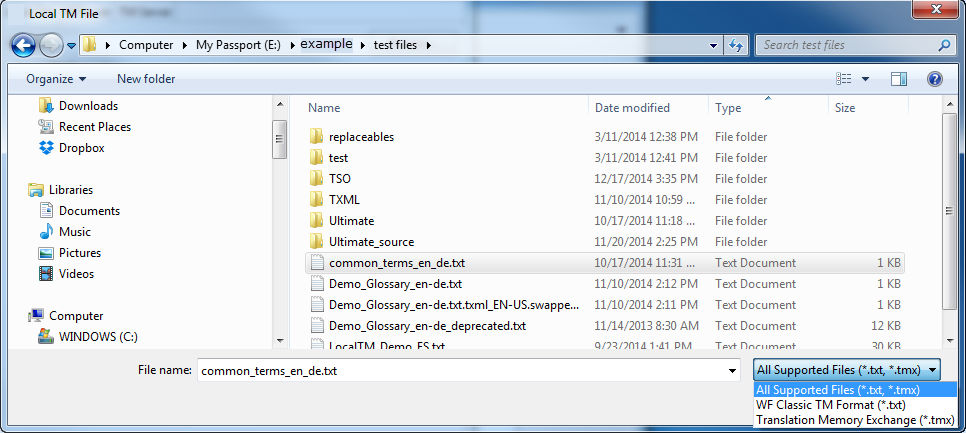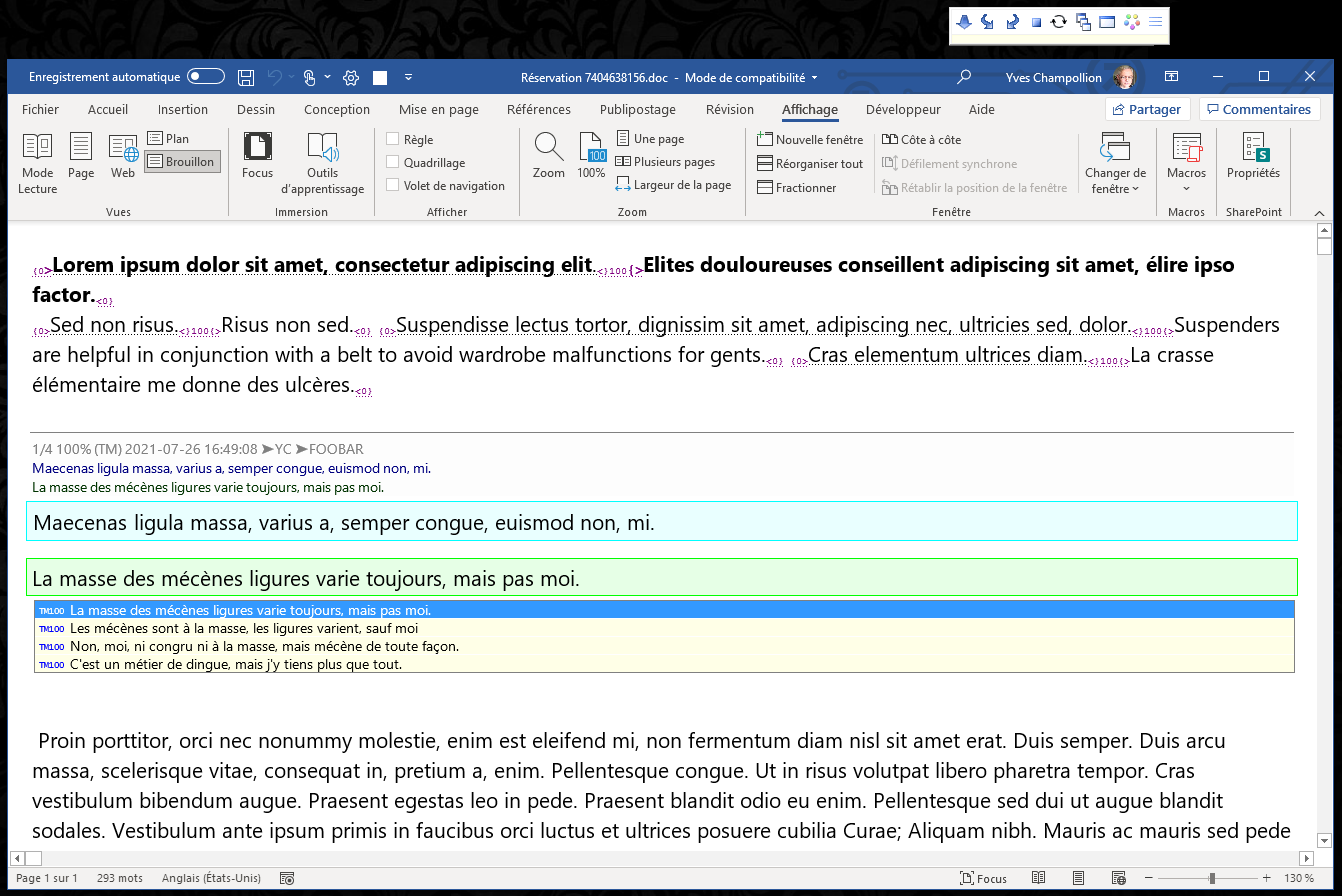
- Wordfast classic how to create and use a tm mac osx#
- Wordfast classic how to create and use a tm update#
- Wordfast classic how to create and use a tm upgrade#
- Wordfast classic how to create and use a tm pro#
- Wordfast classic how to create and use a tm software#
It was distributed to the public in 1999. The first version of Wordfast Classic was called Wordfast version 1, and was developed by Yves Champollion. WFC is actively developed, with regular updates, and the most recent major version number is 8. WFC does not offer direct support for OpenDocument formats because the current versions of Microsoft Word do not have import filters for OpenDocument files.
Wordfast classic how to create and use a tm pro#
Users of the current version of WFC who need to translate Excel and PowerPoint files need to use a demo copy of Wordfast Pro 3 or 5 to create an intermediary file format. Earlier versions of WFC could translate Microsoft Excel (XLS/XLSX) and PowerPoint (PPT/PPTX) files directly, but this feature is not present in the most recent version. WFC can handle the following formats: any format that Microsoft Word can read, including plain text files, Word documents (DOC/DOCX), Rich Text Format (RTF), tagged RTF and tagged XML. This workflow is similar to that of Trados 5, WordFisher, Logoport and Metatexis.

For this reason, the bilingual file format is often referred to as an "uncleaned file". Afterwards, the source text and segment delimiters are removed from the file in a process called "cleaning up". When a document is translated using WFC, it is temporarily turned into a bilingual document by adding segment delimiting characters and retaining both source and target text within the same file. It supports Word 97 or higher on any platform, although some features present in recent versions of WFC only work on higher versions of Microsoft Word. Wordfast Classic (WFC) is written in Visual Basic, and runs inside Microsoft Word.
Wordfast classic how to create and use a tm update#
An update to Wordfast Pro 4 called "Wordfast Pro 5" was released in April 2017, with mostly under-the-hood performance improvements. This tool includes advanced translation management features including a WYSIWYG editor, the ability to create multilingual translation packages, real-time quality assurance, and a powerful translation editor filter.
Wordfast classic how to create and use a tm upgrade#
In April 2016, Wordfast released Wordfast Pro 4, a major upgrade to their standalone Java-based TM tool. By July 2010, 5000 users had registered at Wordfast Anywhere, and by November 2010 the number was 10,000. This tool allows translators to work on projects from virtually any web-enabled device including smartphones, PDAs and tablets. In May 2010, Wordfast released a free online tool known as Wordfast Anywhere. In January 2009, Wordfast released Wordfast Pro, a standalone Java-based TM tool. Since then, Champollion, while holding the title Founder and Chief Architect, has also been CEO and president of the company Wordfast LLC. Since that time, Wordfast has been the sole owner of all right, title and interest, including the copyright, in the Wordfast Server Code. Champollion sold all interest in the Wordfast Server computer program to Wordfast LLC. In 2006, the company Wordfast LLC was founded by Philip Shawe and Elizabeth Elting, also co-owners of the translation company TransPerfect.
Wordfast classic how to create and use a tm software#
Through word of mouth, Wordfast grew to become the second most widely used TM software among translators. Until late 2002, this MS Word-based tool (now known as Wordfast Classic) was freeware.

At that time, other translation memory programs also worked inside Microsoft Word, for example Trados. It was made up of a set of macros that ran inside of Microsoft Word, version 97 or higher.


The software is most popular with freelance translators, although some of the products are also suited for corporate environments. The current Wordfast products run on a variety of platforms, but use largely compatible translation memory formats, and often also have similar workflows. The original Wordfast product, now called Wordfast Classic, was developed by Yves Champollion in 1999 as a cheaper alternative to Trados, a well-known translation memory program. The name Wordfast is used for any of a number of translation memory products developed by Wordfast LLC.
Wordfast classic how to create and use a tm mac osx#
Windows XP and higher, Mac OSX 10.5 and higher with Java (Wordfast Pro 3) / Windows 7 and higher, Mac OSX 10.9 and higher with Java (Wordfast Pro 4), any with Microsoft Word 97 or higher (Wordfast Classic), Windows 2000 or higher (Wordfast Server), recent web browser (Wordfast Anywhere)


 0 kommentar(er)
0 kommentar(er)
